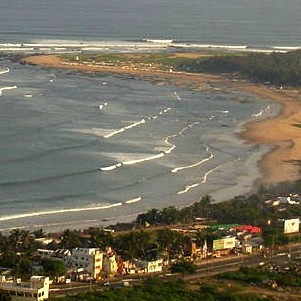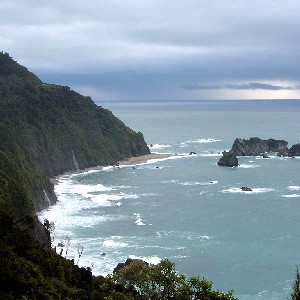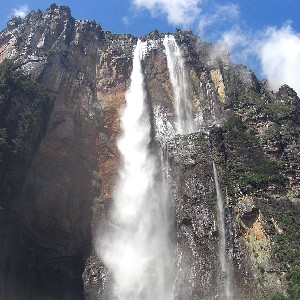Factors influencing coastal landforms
Dec 2016
Home ›
Planet earth ›
What are landforms? ›
Different types of landforms ›
Factors influencing coastal landforms
Coastal landforms are dynamic environments and are remodeled continuously by many factors and forces. Astronomical tides, waves, storm surges and other weather phenomena have been reshaping coastal landforms by erosion and deposition.
Tides
Tides are great influencing forces of coastal landforms and are commonly semi-diurnal (12-hour cycle). The rise and fall of water levels produce oscillating currents known as tidal streams. Tidal currents can transport large quantities of sediments, especially at the mouths of estuaries. The tidal amplitude also determines the sediment deposition or erosion and keep redefining the shoreline of coastal landforms.Considering the tidal range only, the coasts can be classified into micro-tidal (less than two meters) landforms, meso-tidal (two to four meters) landforms and macro-tidal (more than four meters) landforms. Considering the level of influences of waves and tides, coasts can be wave-dominated coasts, tide-dominated coasts, and mixed coasts.
In places where the tide level/sea level has experienced a fall due to either a global sea level change, or local land uplift, an emergent coastline is formed. It is also known as raised beaches. Rias (drowned valleys) and fjords are submerged landforms.
Waves
Waves assist in the erosion of shore.
Image source: http://en.wikipedia.org/wiki/File:Vizag-Beach.JPG
Image attribution: Sekharyeeti | License: CC BY-SA 3.0
Image attribution: Sekharyeeti | License: CC BY-SA 3.0
Strong waves can pickup sediments from deeper waters and make them available for transportation by the coastal currents. Larger the wave larger the particle it can move. Storm waves can even move boulders. Even small waves can lift the sediments and deposit along the coastal shoreline.
Longshore currents
Waves rarely approach the coast perpendicularly. As they approach at an acute angle, they get bent while crashing and generate a current parallel to the shoreline. This parallel movement of water is known as longshore current and it extends up to the zone of breaking waves from the coastal shoreline. In calm conditions the flow may be up to ten centimeters per second, whereas in stormy conditions the flow may exceed one meter per second.As the longshore currents are formed by refracting waves, the direction of flow will depend upon the angle of the wave which in turn depends upon the wind directions. If the wind direction is balanced, the sediment movement is also balanced. If the wind movement and resultant wave action dominates in one direction great volumes of sediment may be moved in one direction.
Rip currents are formed by the wave activity. As waves reach the shore there is upward movement of water on the coastal shoreline. The water level at the shoreline rises beyond the sea level. The level is unstable and there is seaward movement of water which is confined to narrow pathways. The flow can carry the sediments back into wave zone.
Weather elements
The elements of climate, such as wind, rainfall and temperature and also gravity are the important other factors for the development of coastal landforms. Gravity is indirectly involved in the movement of wind and waves as well as in downward movement of sediments. Winds are directly related to the intensity of waves. Landforms like coastal dunes are created by wind action. Temperature is required for physical weathering of sediments. Rainfalls provide runoff for producing and transporting sediments from land to seashore.Keywords: coastal, landforms, influencing factors,
Google+ page
By Mahmood Syed Faheem

Image source: http://en.wikipedia.org/wiki/ File:Knight%27s_Point,_West_Coast.jpg
Image attribution: Swollib |License:CC BY-SA 3.0
Image attribution: Swollib |License:CC BY-SA 3.0

Image source: wikipedia.org/wiki/ File:Salto_del_Angel-Canaima-Venezuela08.JPG
Image attribution: Poco a poco|License:CC BY-SA 3.0
Image attribution: Poco a poco|License:CC BY-SA 3.0
Advertisement